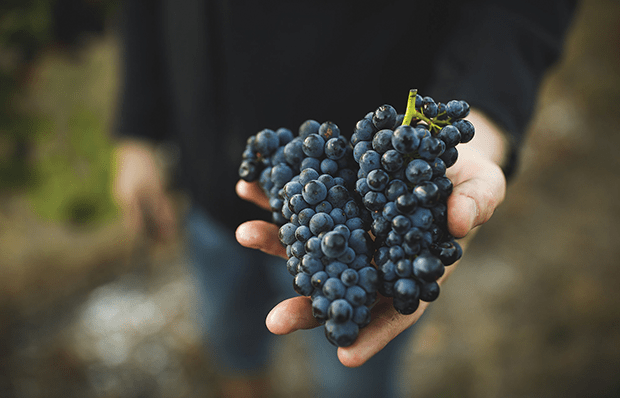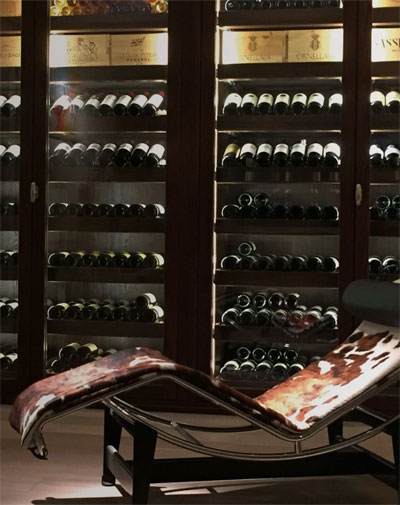
COUNTRY
France

REGION

GRAPE VARIETY
Pinot Noir

VINTAGE
2018
CASE (X12 BOTTLES)
€660,00
AVAILABLE STOCK: 122 BOTTLES
AVAILABLE STOCK: 122 BOTTLES

COUNTRY
France

REGION

GRAPE VARIETY
Pinot Noir

VINTAGE
2018
Also Available vintages 2019 and 2020.
A great introduction to one of Burgundy`s greatest Domaines this wine is a little Gevrey! Produced from 39-year-old vines and vinified in 50% new oak, a noticeable reduction on previous vintages.
A starting point for Christian Sérafin style. This Pinot Noir is completely Burgundian in character but with a stricter structure and deeper and darker fruit. Even this relatively `humble` version can be aged comfortably for 8 to 10 years after the harvest, as long as it holds the premiere crus and many other derivatives.
Tasting Notes: Fresh and pretty, with aromatic cherry fruits - a very good introduction to this top Domaine!
Food Pairing: Delicious with a slow-roasted shoulder of lamb with braised vegetables.
This Domaine was originally put on the map by Christian Sérafin’s father, Stanilaus Sérafin, a Polish émigré, who settled in Burgundy before the war. He initially worked as a mason, before purchasing some land in 1947 and establishing himself as a vigneron. His son Christian inherited the Domaine in 1988, though he had been making the wine for the previous 20 years. Christian Sérafin is now past retirement age, but with a niece (Frédérique) in the vineyards and cuverie, and a daughter (Karine) in the office, continuity is in place. The style here is for powerful wines which age exceptionally well.
About Domaine Sérafin
Christian Sérafin is a widely respected producer held in high regard by Robert M. Parker Jr., the second generation of his family estate, Domaine Serafin, he produces formidable Burgundies that have won over numerous critics. Robert Parker, clearly an ardent fan, makes no effort to hide his admiration towards Sérafin:
“In a village of far too many underachievers, Christian Serafin stands out as one of the sure-handed winemakers. His wines have been remarkably consistent”
Sérafin’s estate includes vineyard holdings in Gevrey-Chambertin, Morey-St.-Denis, and Chambolle-Musigny. His prized Charmes-Chambertin Grand Cru plot occupies a mere 0.31 hectares with vines planted in 1946. Today, the estate is managed by Christian’s daughter Karine and niece Frédérique Goulley.
Case Bottles: 12

SHIPPING FEES
For orders €100,00 and
above we deliver free to
your place
For orders below €100,00 delivery
charge €10,00 within city limits.
Also Available vintages 2019 and 2020.
A great introduction to one of Burgundy`s greatest Domaines this wine is a little Gevrey! Produced from 39-year-old vines and vinified in 50% new oak, a noticeable reduction on previous vintages.
A starting point for Christian Sérafin style. This Pinot Noir is completely Burgundian in character but with a stricter structure and deeper and darker fruit. Even this relatively `humble` version can be aged comfortably for 8 to 10 years after the harvest, as long as it holds the premiere crus and many other derivatives.
Tasting Notes: Fresh and pretty, with aromatic cherry fruits - a very good introduction to this top Domaine!
Food Pairing: Delicious with a slow-roasted shoulder of lamb with braised vegetables.
This Domaine was originally put on the map by Christian Sérafin’s father, Stanilaus Sérafin, a Polish émigré, who settled in Burgundy before the war. He initially worked as a mason, before purchasing some land in 1947 and establishing himself as a vigneron. His son Christian inherited the Domaine in 1988, though he had been making the wine for the previous 20 years. Christian Sérafin is now past retirement age, but with a niece (Frédérique) in the vineyards and cuverie, and a daughter (Karine) in the office, continuity is in place. The style here is for powerful wines which age exceptionally well.
About Domaine Sérafin
Christian Sérafin is a widely respected producer held in high regard by Robert M. Parker Jr., the second generation of his family estate, Domaine Serafin, he produces formidable Burgundies that have won over numerous critics. Robert Parker, clearly an ardent fan, makes no effort to hide his admiration towards Sérafin:
“In a village of far too many underachievers, Christian Serafin stands out as one of the sure-handed winemakers. His wines have been remarkably consistent”
Sérafin’s estate includes vineyard holdings in Gevrey-Chambertin, Morey-St.-Denis, and Chambolle-Musigny. His prized Charmes-Chambertin Grand Cru plot occupies a mere 0.31 hectares with vines planted in 1946. Today, the estate is managed by Christian’s daughter Karine and niece Frédérique Goulley.
Case Bottles: 12

SHIPPING FEES
For orders €100,00 and
above we deliver free to
your place
For orders below €100,00 delivery
charge €10,00 within city limits.

















